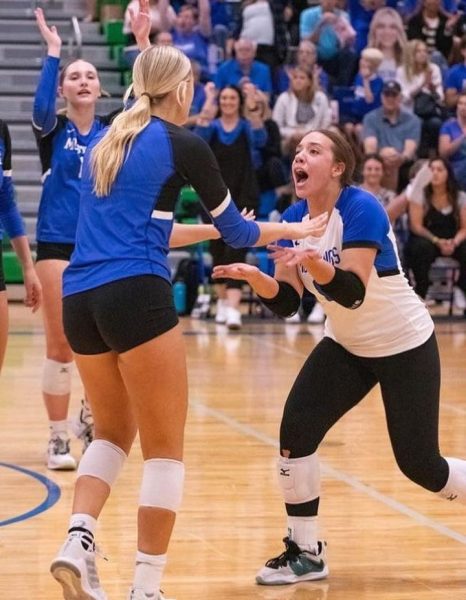Cutting out weight cutting
Making the personal choice of weight cutting in wrestling and its effects
Wrestling is a solitary team sport. While the individual wrestler is on a team, they’re still competing alone. Being on a wrestling team for some has created friendships that withstand the test of time and a culture unique to the community, but when it comes down to it, the wrestler is facing tough decisions on their own.
The loss of weight to make certain weight classes in competition, commonly known as weight cutting, has been one of the many difficult experiences undergone by all wrestlers for decades.
“[The use of weight cutting is] to reach the weight class that [a wrestler] wants, where they have the best chance to wrestle at. I cut by picking a weight class at the beginning of year, and then staying at that weight,” varsity boys wrestler TJ Johnson said.
Weight cutting is when a wrestler will drop weight to stay in one specific weight class that they can compete competitively in by restricting food intake, water-loading, and perspiration through exercise. The goal is to stay in the heavier end of the weight pool in order to be a more formidable opponent against others on the lighter end of the same class.
“The regulations in place today weren’t in place when I wrestled. You could wrestle whatever weight you wanted in those days, no matter how much you had to lose to get there,” boys wrestling coach Scott Loveless said. “I believe that has changed quite a bit over the years. People are more informed about nutrition and fueling the body for competitions.”
In the past, wrestlers were essentially depriving themselves of food to get to an ideal weight that they could still compete in. This led to detrimental effects on their mind and body.
According to a study done by The Journal of Strength and Conditioning Research, rapid weight loss in wrestlers can lead to a “decrease in short-term memory, vigor, concentration, and self-esteem. Not only that, but it also brings about confusion, rage, fatigue, depression, and isolation.”
Due to all of the damage on the body, regulations were put into place by the NSAA to prevent cutting too much weight too quickly, such as hydration testing, body fat testing, and a calendar to track weight loss in a healthy manner.
“Cutting weight has to be done in a set timeline, you can’t just lose 20 pounds for a tournament and expect to wrestle in your weight class. The NSAA only gives us two pounds a week that we can lose so you can’t lose too much too fast,” varsity boys wrestler Shikarendra Chintamadaka said.
Despite the regulations in place, wrestlers like Johnson think weight cutting is too dangerous and choose not to.
“Generally, I don’t think weight cutting is a good idea. In most situations, it’s a personal choice and I think that the benefits and consequences are both personal. It’s not something to be influenced by coaches, peers, or parents,” Johnson said. “It’s [a choice] that you should make for yourself.”
Since an NSAA meeting in 2007 that helped to regulate weight cutting, it’s become less of a threat. However, that doesn’t mean it’s become less dangerous of a decision to make. But just because wrestlers compete alone, that doesn’t mean they don’t have a community of people lifting them up.

